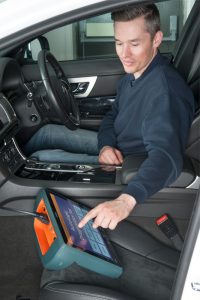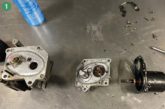Steve White, JLR Master Technician at Autologic, looks at why discounting your diagnostic work has little long-term benefit for you or your customers.
Through my role as part of the Autologic Assist team I’m regularly in dialogue with technicians up and down the country. One topic that comes up in conversation with garages is the sometimes thorny issue of whether to charge their own customers for a diagnosis and how to communicate this better.
My opinion on this is simple: if the customer asks you why you charge for a diagnosis then you need to remind them that the end goal of the whole process is to ultimately save them money. They could easily pay a visit to a garage that doesn’t charge for a diagnosis and will instead throw parts at a problem. The result is that the end bill is high and you’re often left with a customer that is frustrated that the problem
hasn’t been resolved.
So how should you effectively communicate this to your customers? My advice is to make sure that you have total transparency with them from the off. Explain to them that to get a better idea of the problem with the vehicle you must first understand what is going on and so gaining further information is a vital step in enabling you to do this. Let them know that there will be a diagnostic charge but you’re going to
work with them throughout the whole process to try and resolve any issue.
Main dealer
The next stage may be to do a code read or to get a set of dynamics, so for you to be able to do this you’ve had to invest in the right tools and equipment and there is, ultimately, a cost to this. Don’t forget, if they took their car to the main dealer then they would certainly be charged for a diagnosis, so why should you
be any different?
At Autologic, one of the methods that we recommend is to break down every stage of the process on the invoice so you’re showing the customer what you’ve done and why you’ve charged for this. For example, there’s no problem with you including a line on the invoice stating: ‘Diagnosis – 30 minutes’ (or whatever time you spent on a diagnostic) with a charge attributed to this.
Most sensible workshops will seek permission to undertake a one hour diagnostic (we usually recommend £60+ VAT for this, depending on your location) and after that hour is up they’ll then get back in contact with the customer to break-down what they’ve done, what they’ve found and to offer a further advisory, such as ‘we’re getting somewhere with this but we’re going to need more diagnostic time, are you happy to go ahead with this?’ or ‘we’ve found the problem, do you want to action the repair work?’.
In the case of those workshops that subscribe to our Assist service, it may be that that they’ve had to get in contact with our team of Master Techs to help them further with the problem – again you’ve paid for this expertise, Steve White, JLR Master Technician at Autologic, looks at why discounting your diagnostic work has little long-term benefit for you or your customers.so you need to tell the customer that you’ve had to ‘outsource’ an element of your service, but its enabling you to cut down the overall time of the repair and to get from fault to fix much faster.
If your diagnosis is conclusive and you’ve been given permission to undertake the remedial work by the customer we’d also advise that you don’t then discount or remove the cost of the diagnosis – you must place a value on that piece of work. Telling them what you’ve done and detailing this on the invoice, shows real value to the customer and alleviates the ‘didn’t you just plug in that computer thingy’ conversation.
Medical professions
The automotive industry should learn lessons from medical professions. If you visit a doctor or a dentist privately you’ll have to pay for all of the investigative work before they’ll try and fix the issue for you, so why should that philosophy be any different for a customer’s car?
Although the methods we’ve suggested do involve some extra work for the garage and an element of re-education for the customer, if you’re transparent and honest then it’ll stand you in good stead. Good technicians shouldn’t come cheap and it’s important that your customers are aware of that fact.










